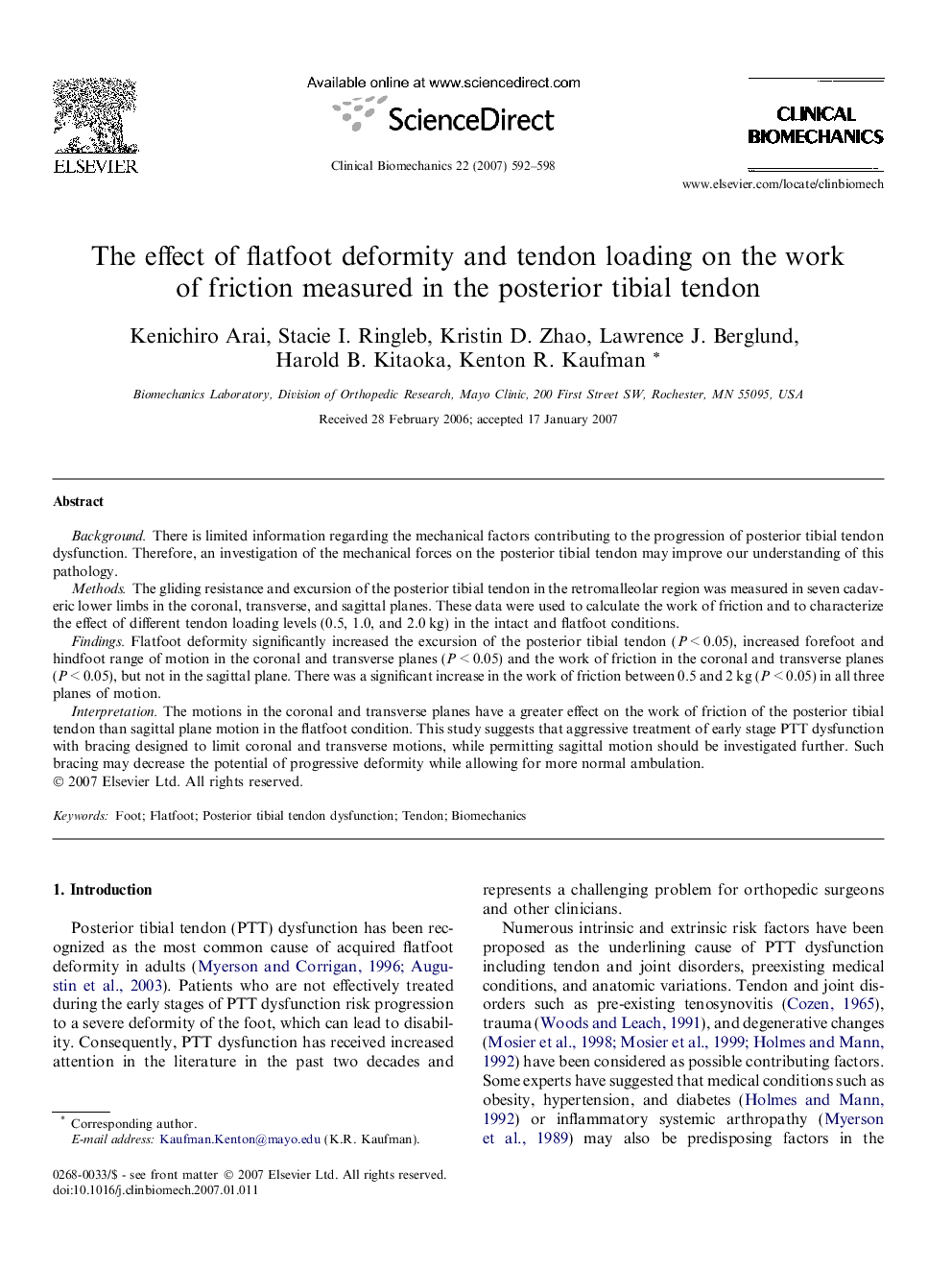| Article ID | Journal | Published Year | Pages | File Type |
|---|---|---|---|---|
| 4051373 | Clinical Biomechanics | 2007 | 7 Pages |
BackgroundThere is limited information regarding the mechanical factors contributing to the progression of posterior tibial tendon dysfunction. Therefore, an investigation of the mechanical forces on the posterior tibial tendon may improve our understanding of this pathology.MethodsThe gliding resistance and excursion of the posterior tibial tendon in the retromalleolar region was measured in seven cadaveric lower limbs in the coronal, transverse, and sagittal planes. These data were used to calculate the work of friction and to characterize the effect of different tendon loading levels (0.5, 1.0, and 2.0 kg) in the intact and flatfoot conditions.FindingsFlatfoot deformity significantly increased the excursion of the posterior tibial tendon (P < 0.05), increased forefoot and hindfoot range of motion in the coronal and transverse planes (P < 0.05) and the work of friction in the coronal and transverse planes (P < 0.05), but not in the sagittal plane. There was a significant increase in the work of friction between 0.5 and 2 kg (P < 0.05) in all three planes of motion.InterpretationThe motions in the coronal and transverse planes have a greater effect on the work of friction of the posterior tibial tendon than sagittal plane motion in the flatfoot condition. This study suggests that aggressive treatment of early stage PTT dysfunction with bracing designed to limit coronal and transverse motions, while permitting sagittal motion should be investigated further. Such bracing may decrease the potential of progressive deformity while allowing for more normal ambulation.
